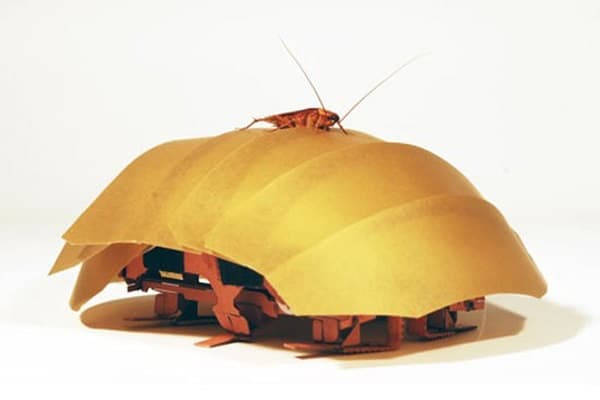Creepy Cockroach-Like Robot Could Be Saviour During Earthquakes: Berkeley Research
Scientists at University of California Berkeley have found robotic inspiration in the creepy ability of cockroaches to squish through the tiniest of cracks and still move at tremendous pace even under the compressed state.
Like all insects, cockroaches have an exoskeleton made of overlapping plates of a tough material called chitin joined together with membrane. Technically, this outer skeleton is supposed to support and protect the body, but in cockroaches, it serves many more purposes.

First, the flexibility allows them to travel at 3 mph. Using a high speed camera, the scientists could observe some marvellous features, the insects could manage themselves into a space less than a quarter of their height by minimising the size of their exoskeletons to nearly half, and all this adjustment would take them just a second. Third, the exoskeleton collapse does not slow their speed down, it continues unabashed by a means a locomotion scientists call body-friction legged crawling. As it stands, cockroaches can tolerate 900 times their body weight without getting hurt.
In these driving characteristics, the scientists found a hidden potential robot. They laid out an arrangement of plates in a prototyping lab, laminated them in a way similar to the exoskeleton, and wrapped the arrangement around in a robot. They christened it the CRAM, or Compressible Robot with Articulated Mechanisms.
When observing how friction affected their ability to move, they noticed that a smooth top shell and a small amount of floor friction were necessary and sufficient, since they require friction only to push forward, not as much to slow themselves down. In and all, their mobility makes them perfectly fine get into rubble, intrude into vents and conduits in the event of the earthquake.
The roach research is supported by the Army Research Laboratory through the Micro Autonomous Systems and Technology (MAST), a collaborative technology alliance involving industry, universities and the US Army.
Source: <a href="https://news.berkeley.edu/2016/02/08/cockroach-inspires-robot-that-squeezes-through-cracks/" target="_blank" rel="nofollow noopener noreferrer">Cockroach inspires robot that squeezes through cracks | Berkeley News</a>
Like all insects, cockroaches have an exoskeleton made of overlapping plates of a tough material called chitin joined together with membrane. Technically, this outer skeleton is supposed to support and protect the body, but in cockroaches, it serves many more purposes.

First, the flexibility allows them to travel at 3 mph. Using a high speed camera, the scientists could observe some marvellous features, the insects could manage themselves into a space less than a quarter of their height by minimising the size of their exoskeletons to nearly half, and all this adjustment would take them just a second. Third, the exoskeleton collapse does not slow their speed down, it continues unabashed by a means a locomotion scientists call body-friction legged crawling. As it stands, cockroaches can tolerate 900 times their body weight without getting hurt.
In these driving characteristics, the scientists found a hidden potential robot. They laid out an arrangement of plates in a prototyping lab, laminated them in a way similar to the exoskeleton, and wrapped the arrangement around in a robot. They christened it the CRAM, or Compressible Robot with Articulated Mechanisms.
When observing how friction affected their ability to move, they noticed that a smooth top shell and a small amount of floor friction were necessary and sufficient, since they require friction only to push forward, not as much to slow themselves down. In and all, their mobility makes them perfectly fine get into rubble, intrude into vents and conduits in the event of the earthquake.
The roach research is supported by the Army Research Laboratory through the Micro Autonomous Systems and Technology (MAST), a collaborative technology alliance involving industry, universities and the US Army.
Source: <a href="https://news.berkeley.edu/2016/02/08/cockroach-inspires-robot-that-squeezes-through-cracks/" target="_blank" rel="nofollow noopener noreferrer">Cockroach inspires robot that squeezes through cracks | Berkeley News</a>
0
